Boise, ID Pollen and Allergy Report for Summer 2023
Pollen Allergy Trends in Boise, ID
When is pollen lowest in Boise, ID?

February
Lowest month total PPM
Avg. PPM
When is pollen highest in Boise, ID?

May
Highest month total PPM
Avg. PPM
How does pollen in Boise, ID compare to Idaho?
Boise has a lower average PPM than the state of Idaho.
Boise yearly avg PPM:
Idaho yearly avg PPM:
How does pollen in Boise, ID compare to the USA?
Boise has a lower average PPM than the USA.
Boise yearly avg PPM:
USA yearly avg PPM:
Is pollen worse this year in Boise, ID?
Spring 2023 was worse than spring 2022.
Spring 2023 PPM:
Spring 2022 PPM:
Average PPM in Boise, ID
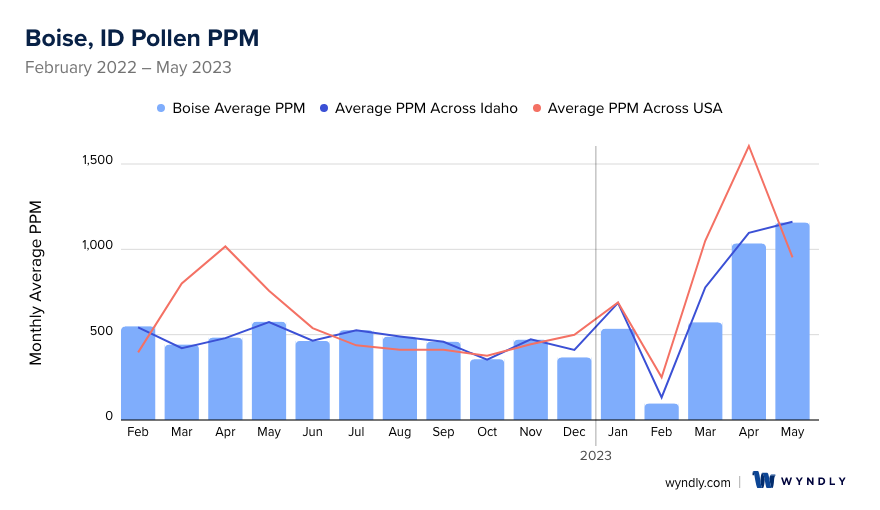
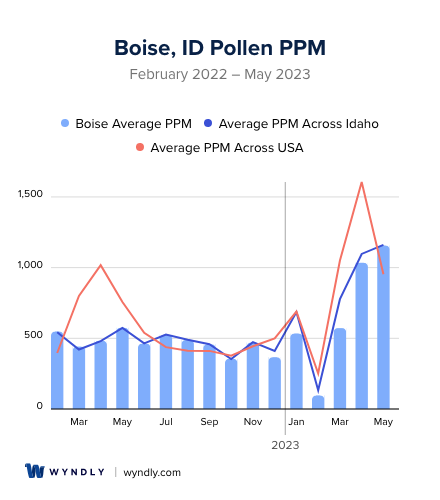
Boise, ID Pollen and Allergy Breakdown by Month
Grass
When is grass pollen highest in Boise, ID?
May has the highest grass pollen in Boise, ID with an average PPM of
When is grass pollen lowest in Boise, ID?
November has the lowest grass pollen in Boise, ID with an average PPM of
Tree
When is tree pollen highest in Boise, ID?
May has the highest tree pollen in Boise, ID with an average PPM of
When is tree pollen lowest in Boise, ID?
September has the lowest tree pollen in Boise, ID with an average PPM of
Weed
When is weed pollen highest in Boise, ID?
September has the highest weed pollen in Boise, ID with an average PPM of
When is weed pollen lowest in Boise, ID?
February has the lowest weed pollen in Boise, ID with an average PPM of
Boise, ID Pollen Monthly Breakdown by Pollen Type

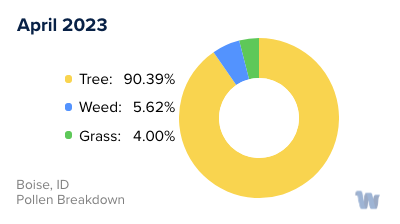
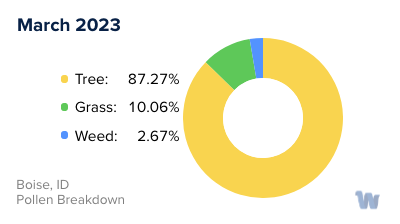
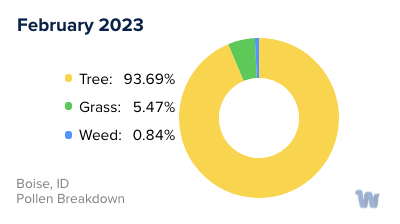
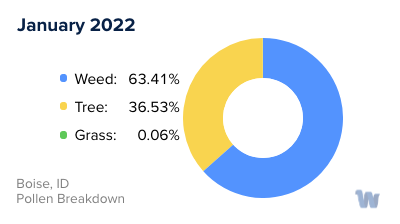
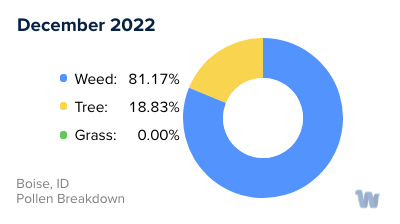
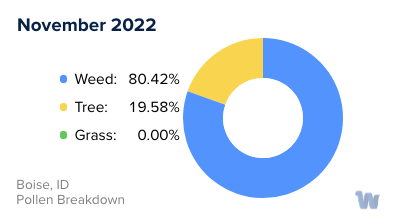
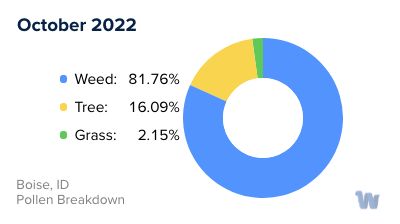
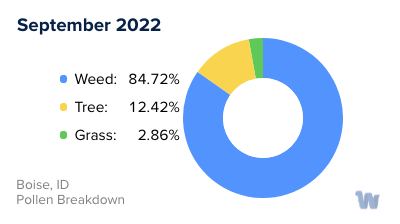
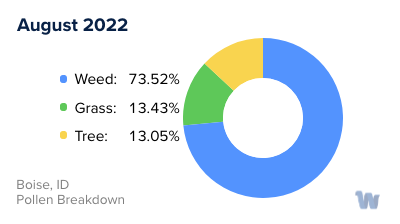
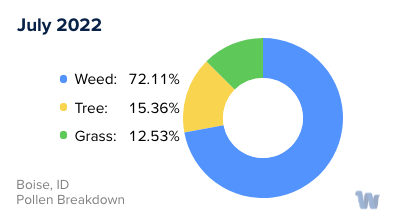
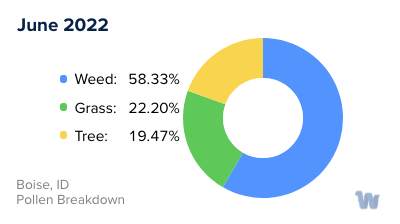
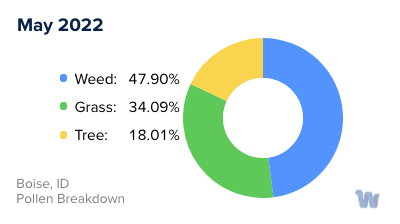
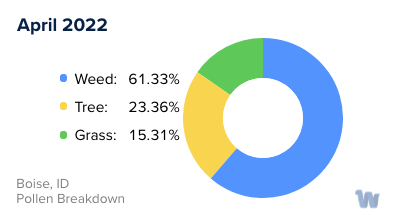
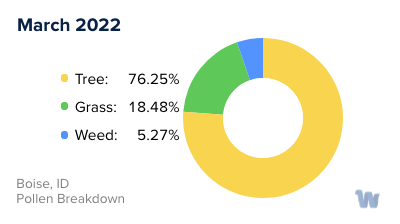
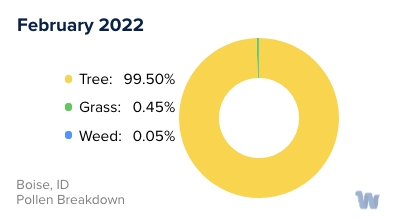
Pollen and Hay Fever in Boise, ID
Pollen allergies, often referred to as hay fever, can be a considerable challenge for residents of Boise, Idaho. The city is home to a variety of plants that produce pollen, leading to significant seasonal allergen exposure.
The allergens that primarily affect Boise's population come from trees, grass, and weeds. Tree pollen is most prevalent in the spring, with the most common culprits being juniper, cottonwood, maple, walnut, and willow trees. These tree pollens usually begin to cause symptoms in late February or early March, as Idaho's relatively mild and wet winters give way to spring.
As the season progresses, grass pollen takes center stage during the summer months. Ryegrass, Bermuda grass, orchard grass, and bluegrass are among the types of grasses that contribute to the high pollen counts during this season.
As summer transitions into fall, weed pollen becomes the main allergen. This category includes allergens from plants like sagebrush, pigweed, and tumbleweed. These weed pollens often persist into late summer and continue until the end of the allergy season.
The allergy season in Boise typically reaches its peak in April, June, and September. These are the months when residents are most likely to experience severe allergy symptoms due to high pollen counts. However, the first frost, which usually occurs around late October, brings a welcome respite from outdoor allergens.
In conclusion, while the exact timing and severity of allergy seasons can vary from year to year, those living in Boise, Idaho, are primarily affected by tree pollen in the spring, grass pollen in the summer, and weed pollen in the fall. Understanding these patterns can help residents prepare for the challenges of each allergy season.


